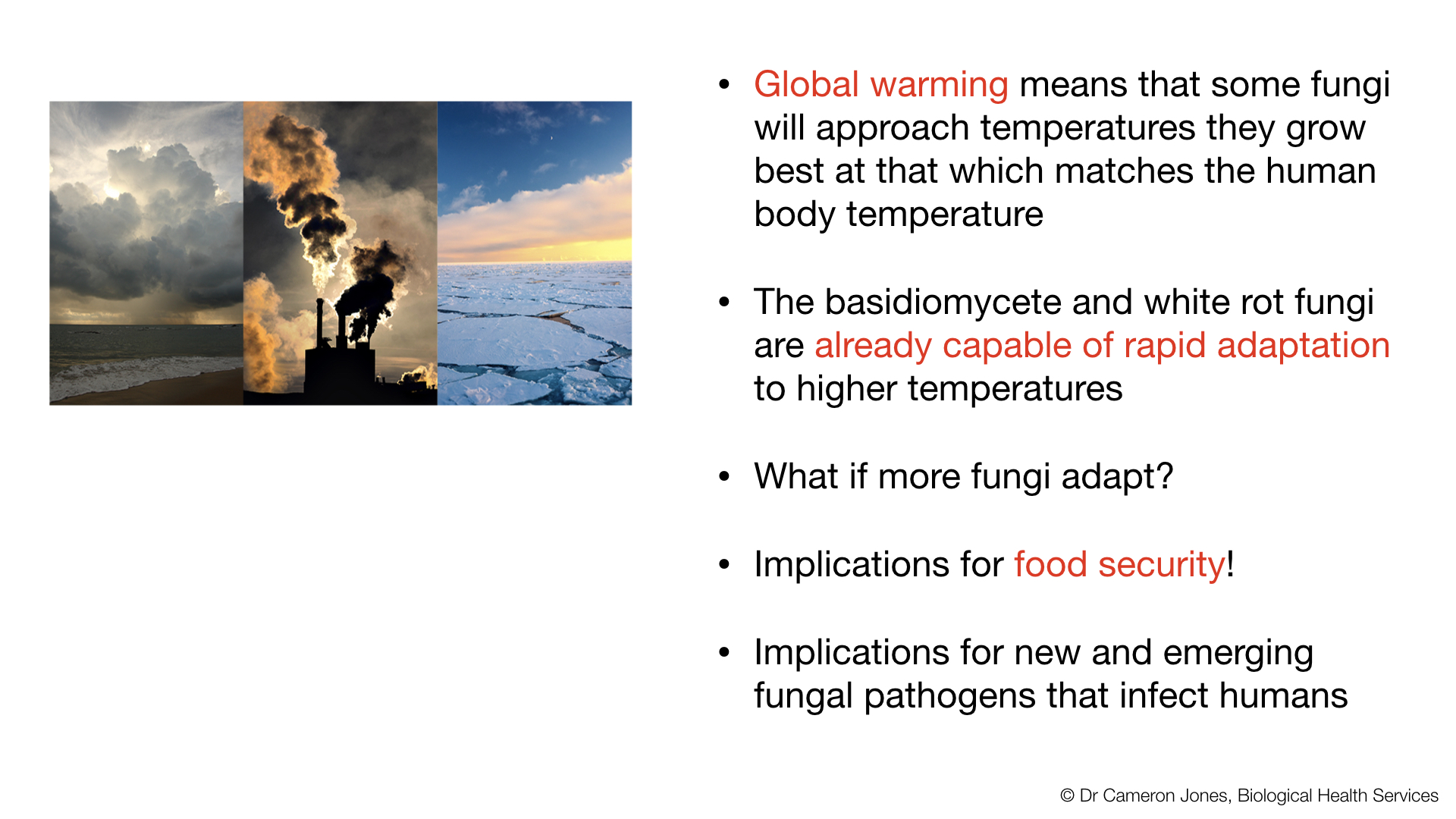5 Fungal threats you might have missed due to COVID-19
With all the attention at the moment focussing on the SARS-CoV-2 virus, the rest of microbiology has taken somewhat of a backseat. While the COVID pandemic has restricted behaviour and led to 6.4M cases and 383,000 deaths, the number of illnesses and deaths caused by fungi is also of epic proportions at 800M and 1.6M deaths annually. With global warming a serious problem for humanity, I want this week to discuss some of the reasons that fungi are often neglected. I want to shed some light on why this is, and what we should be discussing. We'll look at forced evolution in the lab and why Temperature optima may well turn out to be the best predictor of the next fungal plague or infection illness. Will it turn on us or our agriculture crops? Thats the crux of food security - and mycotoxins and other direct infections do more than reduce our access to bananas! I'll also make a short review of some of the fungal catastrophes to put this into context as well as discuss what we know about COVID and co-infections from Aspergillus fumigatus.
Topics:
1. Fungi are under-appreciated as a source of infection and co-infection. Viruses are now easily understood to be a source of infection between people and most people understand the concept of hospital acquired bacterial infections, but…

Some facts about fungal biology that make them so successful

2. Fungi have significant genetic flexibility and rapid evolution

3. Global warming and fungal disease, invasive fungal infections after natural disasters

4. Plant and agricultural fungal threats much better understood - food security impacts potentially devastating
5. Short history of catastrophic events caused by fungi.
REFERENCES:
Casadevall A. Global Catastrophic Threats from the Fungal Kingdom. Curr Top Microbiol Immunol. 2019:21-32. doi:10.1007/82_2019_161
Case N, Heitman J, Cowen L. The Rise of Fungi: A Report on the CIFAR Program Fungal Kingdom: Threats & Opportunities Inaugural Meeting. G3:Genes|Genomes|Genetics. 2020;10(6):1837-1842. doi:10.1534/g3.120.401271
ALL ABOUT GAFFI: Fungal diseases are neglected worldwide by public health authorities. Gaffi.org. https://www.gaffi.org/. Published 2020. Accessed June 6, 2020.
Lovett R. Space station mold survives 200 times the radiation dose that would kill a human. Science | AAAS. https://www.sciencemag.org/news/2019/06/space-station-mold-survives-200-times-radiation-dose-would-kill-human#:~:text=Astronauts%20on%20the%20International%20Space,where%20radiation%20doses%20are%20low.&text=The%20gray%20is%20a%20measure%20of%20the%20amount%20of%20absorbed%20radiation%20energy. Published 2020. Accessed June 6, 2020.
Pomeroy R. Fungi That 'Eat' Radiation Are Growing on the Walls of Chernobyl's Ruined Nuclear Reactor | RealClearScience. Realclearscience.com. https://www.realclearscience.com/blog/2020/02/04/fungi_that_eat_radiation_are_growing_on_the_walls_of_chernobyls_ruined_nuclear_reactor.html. Published 2020. Accessed June 6, 2020.
Carbone C. Surprising find in Chernobyl reactor. NewsComAu. https://www.news.com.au/technology/science/evolution/melaninfilled-fungus-thriving-on-radiation-from-chernobyl-meltdown/news-story/15af9f34faa4b62dff46a1258dbfb235. Published 2020. Accessed June 6, 2020.
de Crecy E, Jaronski S, Lyons B, Lyons T, Keyhani N. Directed evolution of a filamentous fungus for thermotolerance. BMC Biotechnol. 2009;9(1):74. doi:10.1186/1472-6750-9-74
Leach MD, Cowen LE. Surviving the heat of the moment: a fungal pathogens perspective. PLoS Pathog. 2013;9(3):e1003163. doi:10.1371/journal.ppat.1003163
Dale, J., James, A., Paul, J. et al. Transgenic Cavendish bananas with resistance to Fusarium wilt tropical race 4. Nat Commun 8, 1496 (2017). https://doi.org/10.1038/s41467-017-01670-6


